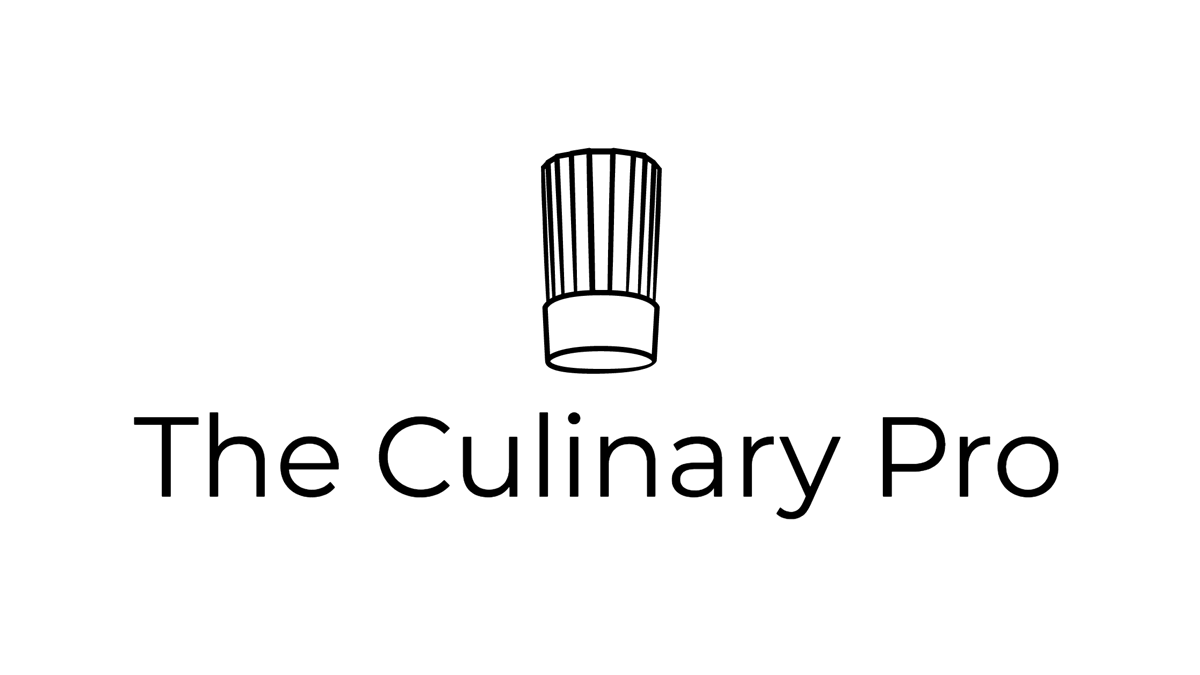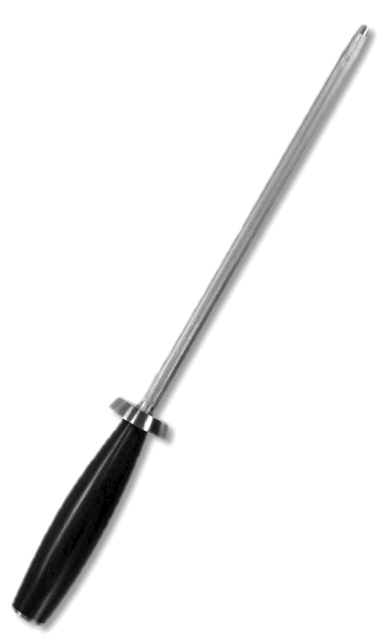Honing vs. Sharpening
Honing Steel
Knives become dull through repeated use and must be honed or sharpened to regain their edge.
Honing is the process of straightening a knife’s edge, which becomes bent and out of alignment from contact with the hard surface of a cutting board.
A honing steel should always be kept at your workstation and used regularly when working with a knife.
A steel doesn’t sharpen a knife, so if repeated steeling doesn’t produce better results, it should be sharpened with a whetstone.
Two-Sided Sharpening Stone
Cutlery Sharpening
Various devices are used today to keep cutlery sharp, including traditional sharpening stones, rod-type systems, slotted manual and electric sharpeners, and belt-type sharpeners. Most chefs prefer using conventional sharpening stones, which are standard in most professional kitchens. However, cutlery should be sharpened periodically by a professional knife sharpener using a belt-type sharpening system for the best maintenance.
Whetstone
Japanese Water Stone
Whetstone is a term used for stone sharpeners, both natural and artificial. The term “whet” means to sharpen a blade. Sharpening stones come in various shapes, sizes, and material compositions. Stones are usually available in various grades, which refer to the grit size of the particles in the stone.
The most notable natural stones are from mines in Arkansas, Belgium, Japan, India, and Turkey. Natural stones are expensive and harder to obtain because many mines have been depleted.
Artificial sharpening stones composed of stone, ceramic, or diamond materials are available with two or three levels of grit or coarseness. They are the most common types used in professional kitchens. These stones can be used dry or with water or oil.
Japanese water stones are made from natural or artificial materials that are softer than Western-style sharpening stones. They are soaked in water before sharpening, and because they are made from softer materials, they are less abrasive on cutlery.
Sharpening with a Whetstone
The general objective is to create a consistent edge on the blade without causing excessive wear on the knife or an uneven edge. The knife is laid parallel to the stone's surface with a slight 10°-20° angle depending on the blade type. The process begins by sharpening one side, which will create a burr on the opposite edge. The burr is then taken off, returning an edge to the knife.
Tri-Stone
Place the stone on a table with a damp towel underneath to prevent slippage.
Oil or wet the stone before starting the sharpening process.
The angle of the blade should be about 10° for Japanese blades and 20° for German blades.
Apply even without excessive pressure when drawing the knife across the stone's surface.
The knife can be drawn across the stone from the blade's tip to the heel of the blade or in reverse from the heel to the tip.
Follow through and sharpen the complete blade from tip to heel so there are no dull spots at the top or bottom.
Draw the blade across the stone five times, and repeat the process with the opposite side of the knife.
Use the coarser grit sharpening surface to begin the process and move to the finer grit to finish the sharpening process.
Knife Safety Tips
A sharp knife is a safe knife. Dull knives make it harder to cut through the surface of some foods, resulting in the knife slipping and causing injury. Dull knives can also make work more challenging by putting a strain on your hands, wrists, and arms. Both sharp and dull knives can result in accidents, but dull knives usually result in worse ones.
Keep focused to avoid accidents. Distractions often lead to accidents, so stop cutting when talking to someone or if something in the kitchen distracts your attention.
Stabilize the cutting board. Cutting boards now come with rubber feet to keep them from sliding, but if they don’t, make sure you use a damp towel under the board to stabilize it.
Never grab a falling knife. Avoid leaving a knife with the handle handing over the edge of a workspace. The instinct to hold for anything falling should be avoided when a knife falls. Keep your hands and feet out of the way of the falling object.
Use the right knife for the right job. Knife injuries occur through laziness when using the knife at hand rather than the correct knife for a job, so always have your cutlery set within easy reach.
Carry a knife properly. In a professional kitchen, the environment and pace can be pretty hectic. Always walk with a knife pointed straight down and the blade turned towards your thigh. Never place a knife on a cutting board or box and walk with it. If you trip, the knife will fly through the air and possibly cause injury to someone else.
Never place a knife in a sink full of water. Always wash knives and other sharp objects like food processor blades by hand and put them away immediately. Sinks are bad for knives because they can damage the blade, but it can be worse if someone reaches into the sink without knowing.
Always cut on a cutting board. Hard surfaces like metal, glass, or marble will damage and dull a knife’s edge.




